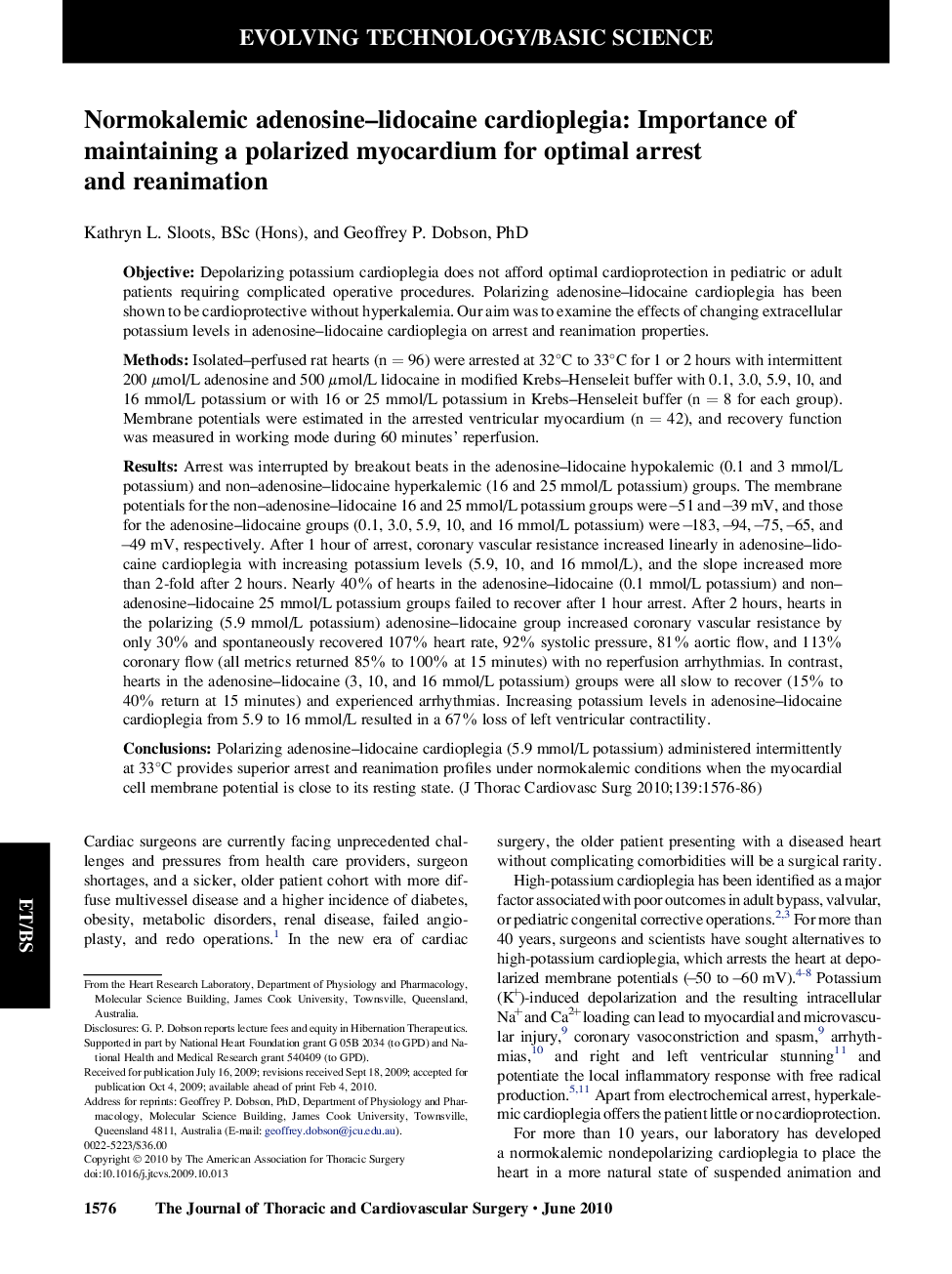| Article ID | Journal | Published Year | Pages | File Type |
|---|---|---|---|---|
| 2984103 | The Journal of Thoracic and Cardiovascular Surgery | 2010 | 11 Pages |
ObjectiveDepolarizing potassium cardioplegia does not afford optimal cardioprotection in pediatric or adult patients requiring complicated operative procedures. Polarizing adenosine–lidocaine cardioplegia has been shown to be cardioprotective without hyperkalemia. Our aim was to examine the effects of changing extracellular potassium levels in adenosine–lidocaine cardioplegia on arrest and reanimation properties.MethodsIsolated–perfused rat hearts (n = 96) were arrested at 32°C to 33°C for 1 or 2 hours with intermittent 200 μmol/L adenosine and 500 μmol/L lidocaine in modified Krebs–Henseleit buffer with 0.1, 3.0, 5.9, 10, and 16 mmol/L potassium or with 16 or 25 mmol/L potassium in Krebs–Henseleit buffer (n = 8 for each group). Membrane potentials were estimated in the arrested ventricular myocardium (n = 42), and recovery function was measured in working mode during 60 minutes' reperfusion.ResultsArrest was interrupted by breakout beats in the adenosine–lidocaine hypokalemic (0.1 and 3 mmol/L potassium) and non–adenosine–lidocaine hyperkalemic (16 and 25 mmol/L potassium) groups. The membrane potentials for the non–adenosine–lidocaine 16 and 25 mmol/L potassium groups were −51 and −39 mV, and those for the adenosine–lidocaine groups (0.1, 3.0, 5.9, 10, and 16 mmol/L potassium) were −183, −94, −75, −65, and −49 mV, respectively. After 1 hour of arrest, coronary vascular resistance increased linearly in adenosine–lidocaine cardioplegia with increasing potassium levels (5.9, 10, and 16 mmol/L), and the slope increased more than 2-fold after 2 hours. Nearly 40% of hearts in the adenosine–lidocaine (0.1 mmol/L potassium) and non–adenosine–lidocaine 25 mmol/L potassium groups failed to recover after 1 hour arrest. After 2 hours, hearts in the polarizing (5.9 mmol/L potassium) adenosine–lidocaine group increased coronary vascular resistance by only 30% and spontaneously recovered 107% heart rate, 92% systolic pressure, 81% aortic flow, and 113% coronary flow (all metrics returned 85% to 100% at 15 minutes) with no reperfusion arrhythmias. In contrast, hearts in the adenosine–lidocaine (3, 10, and 16 mmol/L potassium) groups were all slow to recover (15% to 40% return at 15 minutes) and experienced arrhythmias. Increasing potassium levels in adenosine–lidocaine cardioplegia from 5.9 to 16 mmol/L resulted in a 67% loss of left ventricular contractility.ConclusionsPolarizing adenosine–lidocaine cardioplegia (5.9 mmol/L potassium) administered intermittently at 33°C provides superior arrest and reanimation profiles under normokalemic conditions when the myocardial cell membrane potential is close to its resting state.
